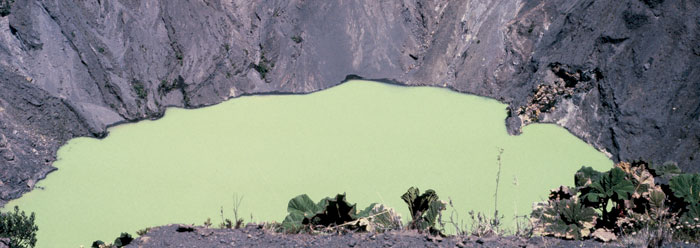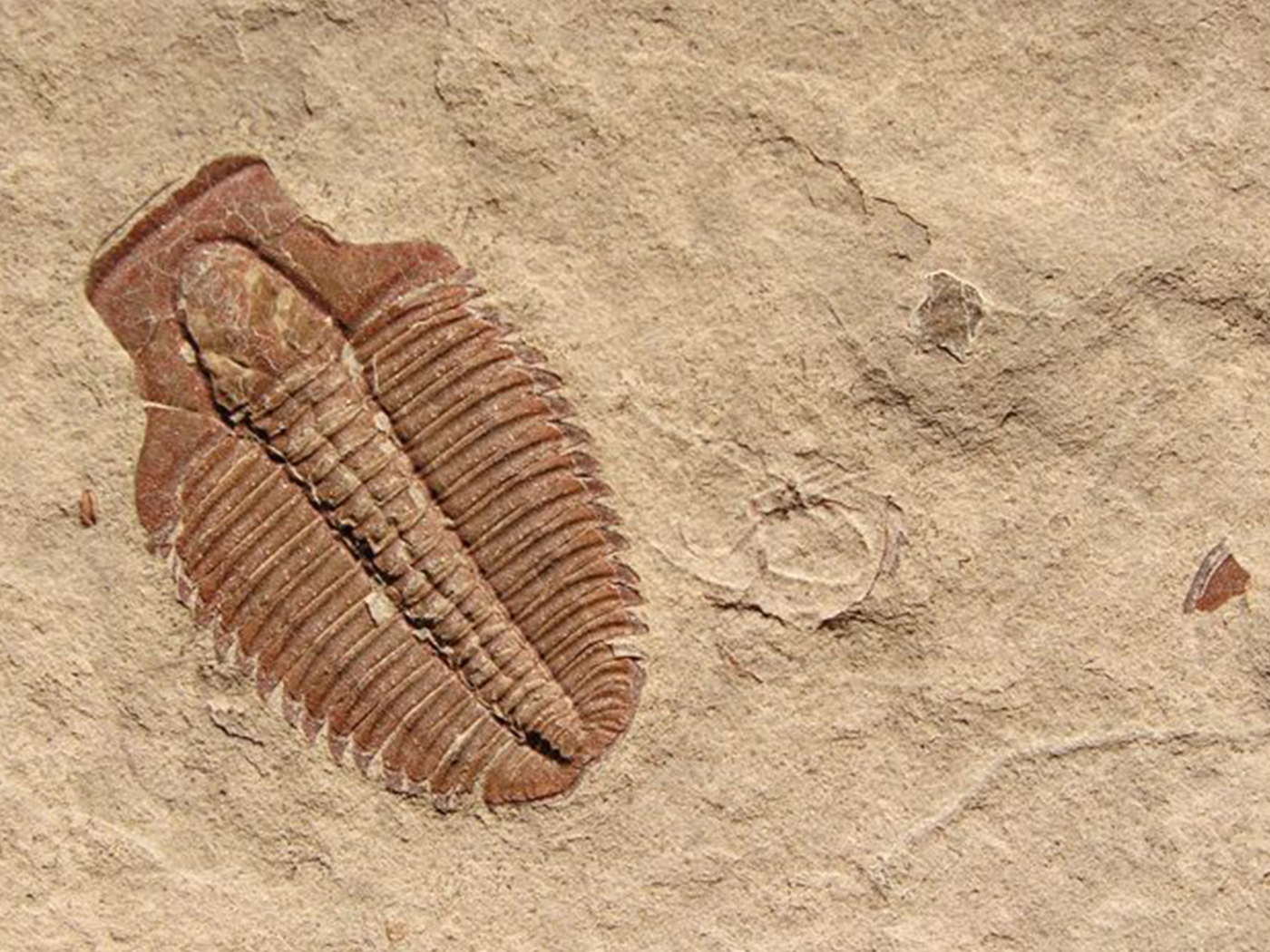Magma can really make tracks according to a recent study published in Nature that has significantly upped the perceived speed limit of magma movement in the earth.1 Philipp Ruprecht and Terry Plank examined rocks generated from the most recent, 1963–1965 eruption of the Irazú volcano in Costa Rica and found indications that the magma traveled at 150–300 feet per day and possibly as fast as several thousand feet per day. These findings present problems for old-earth theories that are based on sluggish magma movement.
Key factors in the study were the olivine crystals found in the rocks generated during this latest eruption. These crystals preserved the chemical signature of the mantle below the crust from as deep as 22 miles below the surface. Lack of chemical mixing within the magma below the volcano indicates that ascent times were extremely short, with travel from the top of the mantle to the surface taking only a matter of months.
Magmas ascend through the earth because the liquid is more buoyant than the surrounding rocks, somewhat like a hot air balloon traveling upward through the cooler air. However, for many decades, most uniformitarian scientists advocated slow-moving, slow-cooling magmas that inched their way to the surface over thousands or even millions of years.2 The present study smashes this ingrained myth, replacing it with evidence of a more rapid, "catastrophic" magma ascent.
Creation scientists advocate this theory of rapid ascent and cooling of magmas.2,3 Granites in the Front Range of Colorado and in the mountains of British Columbia, Canada, had telling ascent rates between 0.5 and 9.0 miles per year.2 However, these magmas originated in the crust at depths only 13 miles down. The Nature study reveals a rapid ascent from depths as far down as the top of the mantle—well beyond 20 miles deep!1
Secular scientists argue that the Sierra Nevada batholith in California, a large magma chamber many miles across, formed by slow magma movements, bit by bit, over a 40-million-year time span. However, based on this newer ascension-rate data, even extensive granitic batholiths, like the Sierra Nevadas, could have formed in just over 1,000 years.2
Studies showing the brisk rise of magma during volcanic eruptions are now becoming more common, and scientists are even considering such movement "catastrophic."4 Nature authors Ruprecht and Plank conclude, "This is not an isolated occurrence; magma mixing, mafic magma recharge, and high Fo [fosterite] olivines are common to many stratovolcanoes above subduction zones [i.e., the Cascade Range in Washington and Oregon], and the approach we have outlined here may be applied generally."1
Evidence supporting rapid and catastrophic movement of magma fits the young-earth model, proving that millions and billions of years are not necessary to form the geologic features we see today. The reality is that volcanoes and magmas can form and move rapidly, a fact that confirms the youthful age of the earth spelled out in the book of Genesis.
References
- Ruprecht, P. and T. Plank. 2013. Feeding andesitic eruptions with a high-speed connection from the mantle. Nature. 500 (7460): 68-72.
- Snelling, A. 2009. Earth's Catastrophic Past, Volume 2. Dallas, TX: Institute for Creation Research, 987-993.
- Woodmorappe, J. 2001. The rapid formation of granitic rocks: more evidence. Journal of Creation. 15 (2): 122-125.
- Petford, N. et al. 2000. Granite magma formation, transport and emplacement in the earth's crust. Nature. 408 (6813): 669-673.
Image credit: Tim Clarey
* Dr. Clarey is a Research Associate at the Institute for Creation Research and received his Ph.D. in Geology from Western Michigan University.
Article posted on September 13, 2013.
























